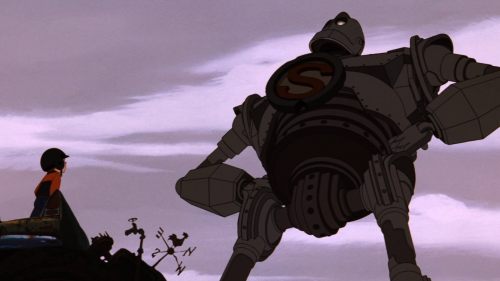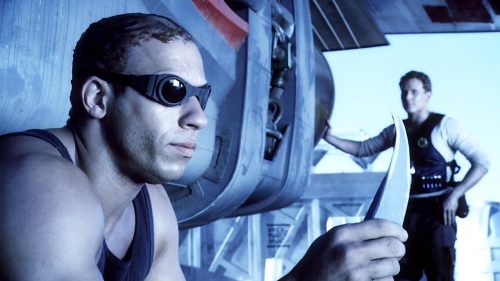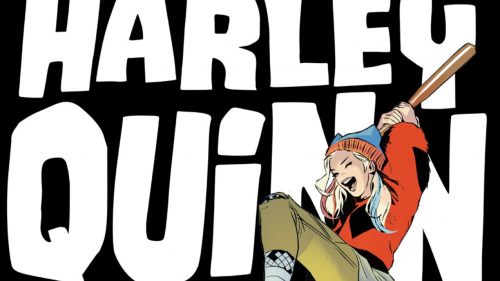BLOODSHOT REBORN: A Bullet-Scarred And Thrilling Quest For Identity
Vin Diesel’s Bloodshot movie comes out this week (get your tickets now!). Its qualities as an adaptation and as a film have yet to be determined. But there is one thing that I can say unequivocally – Bloodshot, when drawn and written well, is a very compelling anti-hero. And as the protagonist of the 2015-2016 comic Bloodshot Reborn, he’s the core of one of my all-time favorite superhero stories. Drawn by Mico Suayan, Raul Allen, Butch Guice, Lewis LaRosa, and Doug Braithwaite and written by Jeff Lemire, Reborn (and its miniseries conclusion Bloodshot U.S.A.) is something rare and wonderful – a superhero comic meant for an adult audience that is genuinely grown-up. Make no mistake, there’s thrilling action, more than a little daring heroism and some grade-A all-caps COMICS moments. But first and foremost, Reborn is the story of a very damaged person healing and learning how to be human. Each of its five story arcs turns on the title character’s relationship to himself. Gradually, the man who might be named Ray Garrison grows from a discontented, haunted husk into someone who is working to heal his heart and willingly pursuing his own happiness. This does not come easily, especially since Reborn’s creative team push Bloodshot/Ray’s development by pushing the shape of its genre. And that’s a big part of what makes it such a fun read (Much of the creative team would also return for a sequel series, Bloodshot Salvation, but I have not had a chance to read it in full).
To lay Reborn out, Bloodshot was once a living weapon – a human soldier enhanced by a fleet of nanites that could instantly heal almost any injury. Beaking free of his sinister creators at Project Rising Spirit and bouncing around the Valiant comics universe, the amnesiac anti-hero was able to learn a little about what might have been his past (including the name “Ray Garrison”) and ultimately returned to ordinary humanity through the dying act of Kay McHenry, a powerful superheroine whom he had come to care for. But without a mission and the identity which had defined him since first reclaiming his free will, Ray lost his way. His sanity, already shaky, took a turn for the worse – he began to hallucinate Kay and a deranged, child-like, cartoon version of himself called Bloodsquirt. He was drifting through an airless and anguished life when the murders began. The same bloodthirsty nanites that had given him his powers were somehow seeking out new humans to take root in – ideally those who could easily be turned towards violence. For all the grief being Bloodshot had caused him, Ray could not stand by as the nanites twisted people into their murderous meat puppets. And as the nanites’ original host, Ray could re-absorb them from their victims, halting their rampages and regaining his powers in the process. He set out to do so. Thus, to quote the comic’s title, was Bloodshot reborn. But all the while, Rising Spirit was watching, watching and plotting. The history of Bloodshot was far longer than the history of Ray Garrison as Bloodshot, and they were not going to give up on the project just because the current model was temporarily out of their control. After all, there was money to be made.
Each of Reborn’s story arcs tilts its superheroism towards a different genre. The series’ first half (collected as “Colorado” and “The Hunt”) leans heavily towards horror. The nanites’ pseudo-Bloodshots are murderers with the durability of slasher villains – especially earlier in the arc, when Ray has to rely on his wits and experience to combat their vastly superior strength. And Mico Suayan takes care to highlight the eeriness of Bloodshot’s design in his art. Ray is undoubtedly heroic, but his chalk-white skin, glowing red eyes and organic chest logo look unsettling on him. On the pseudo-Bloodshots, they become outright frightening:

While the pseudo-Bloodshots offer Ray external terror, his shaky sanity brings a level of psychological horror into play as well – particularly during the issue when Bloodsquirt tries to goad Ray into murdering his recently-met traveling companion – a young woman named Magic. Bloodsquirt takes his tormented doppelganger on a candy-coated journey to hell. Raul Allan renders Bloodsquirt’s universe as a garish nightmare, one where the real Ray looks as disconcertingly out of place as he feels:

In its back half, Reborn shifts more towards heavily science-fiction-based action. “The Analog Man” directly riffs on The Road Warrior and Fury Road, keeping the now-fully-restored Bloodshot vulnerable by pitting him against an apparent future where his nanites are long obsolete and roving bands of raiders prey upon the innocent. Lewis LaRosa emphasizes the speed and power of this future’s big rigs – and of Bloodshot himself. His tech may be obsolete, but that does not mean that it is ineffectual:

“Bloodshot Island,” Reborn’s penultimate arc, continues the book’s trend of finding ways to make Bloodshot the underdog (while introducing another Bloodshot who is literally a dog, Bloodhound), in this case by trapping him on an island with the Bloodshots who came before him and pitting them all against Rising Spirit’s latest nanite-based super soldier. Where “The Analog Man” saw Bloodshot facing off against hordes of foes whose tech was more advanced than his own but without his level of skill, the primary antagonist of “Bloodshot Island” is, put simply, an anti-Bloodshot weapon. Called “Deathmate,” she knows exactly how to overwhelm and (messily) slay her unfortunate foes. And as drawn by Suayan, she is implacable:

Bloodshot U.S.A. folds Reborn’s horror and science fiction elements together with full-on large-scale superhero action. Bloodshot, his predecessors and several of the other heroes from the Valiant universe must save New York City from itself when Rising Spirit sets the nanites loose as a viral plague that swiftly transforms pretty much everyone who is not already a Bloodshot into a Bloodshot. It’s action on a much grander scale than the rest of the book (which is, all things considered, rather intimate as far as superhero comics go). But Braithwaite keeps his focus on individuals, placing their actions in context with each other to build out the larger picture:

With Reborn’s shifting genres, Bloodshot/Ray’s character is tested in different ways. “Colorado” and “The Hunt” separate “Ray” from “Bloodshot” and force him to start thinking of himself as more than a weapon, even as he progressively regains his powers throughout the arc. “The Analog Man” sees him confirm that he deeply loves Magic and wants to build a life with her – feelings that remain true and genuine even when the scenario in which he lived them proves to be more than it seems. “Bloodshot Island” complicates his understanding of himself and of the larger Bloodshot project introducing the previous Bloodshots – men who are not just comrades, but genuine peers in a way that no one else could quite be. And U.S.A. brings it all together, as Ray and his fellow Bloodshots fight to prevent New York’s population from being forcibly transformed into murderous bioweapons – and in turn fight to claim their lives and agency as their own. It’s seriously compelling character work, made possible by the Reborn creative team’s formal playfulness. It’s an excellent piece of craftwork, one that makes Bloodshot Reborn one of my all-time favorite superhero comics.



